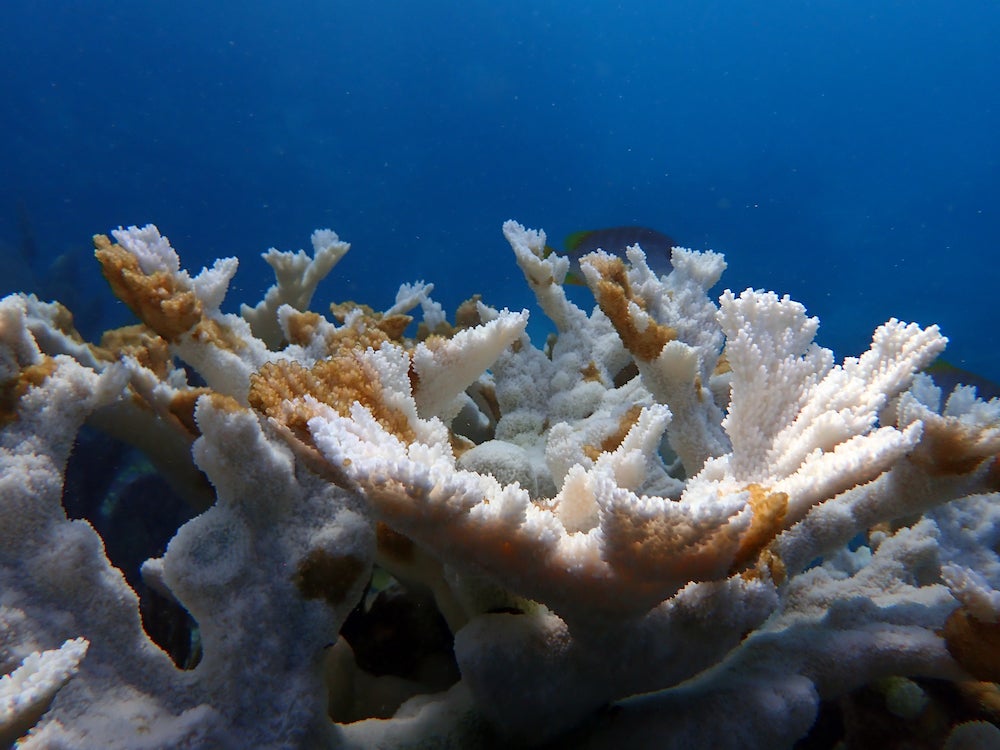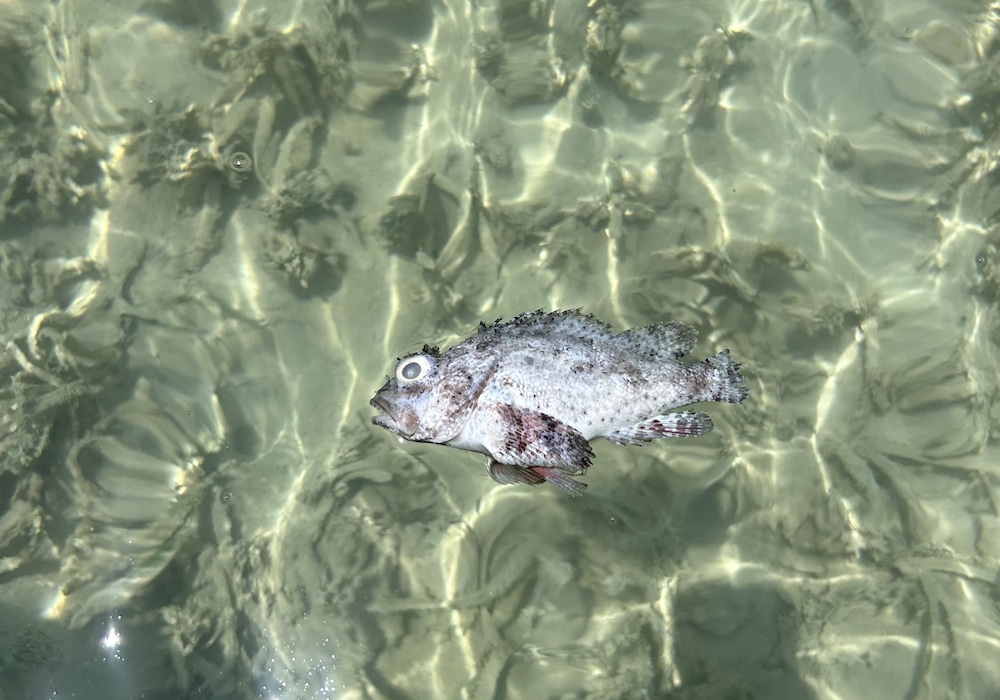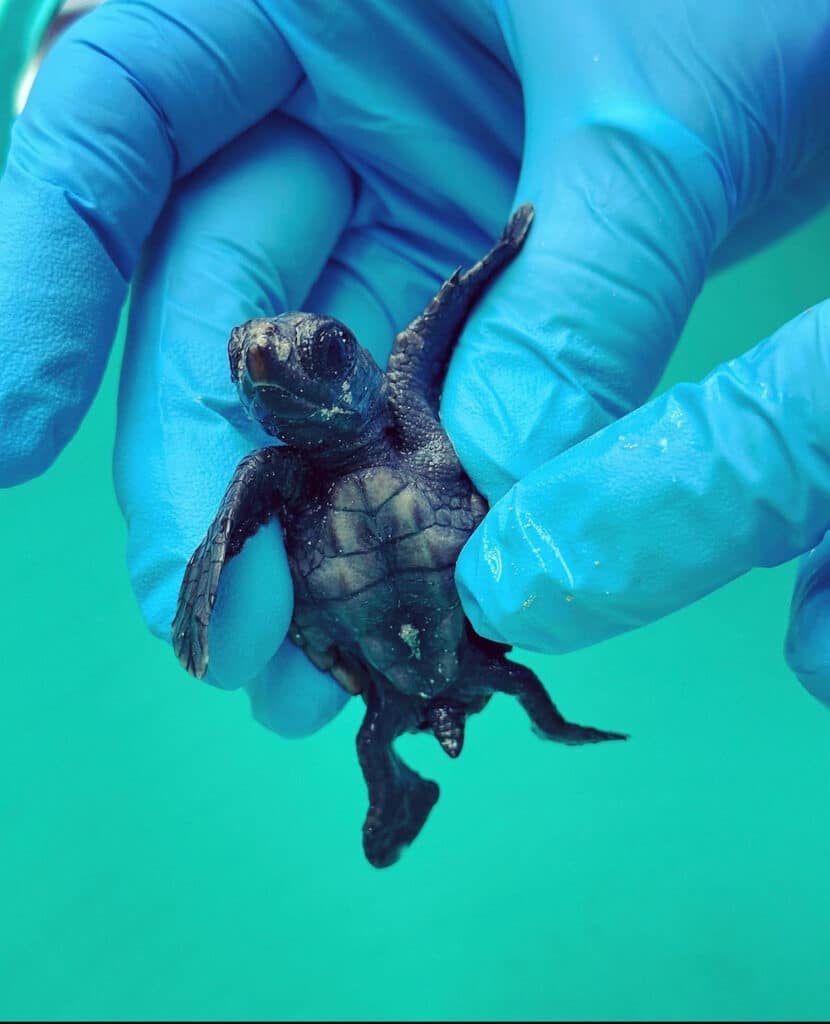
In July, a historic marine heat wave descended upon the Florida Keys. Unprecedented coral bleaching ensued within the Florida Keys National Marine Sanctuary (FKNMS), which boasts the largest coral barrier reef within the continental United States. With high temperatures predicted to persist until October, scientists worry about potential harm to the entire ecosystem.
Historic Ocean Heat
Beginning in mid-July, sea temperatures in the Gulf of Mexico and Caribbean Sea were up to 3.5°F warmer than usual, noted a Mission: Iconic Reefs (MIR) fact sheet emailed to EcoWatch. In South Florida, the marine heatwave hit a record-breaking 95˚F – the warmest ever since recording began. One water temperature buoy, in nearby Everglades National Park, even hit a “hot tub temperature of 101.19°F” with other triple-digit reads nearby.
“The level of warmth we are seeing today is only possible because of the warming over the past 150 years due to human activity,” said Dr. Zeke Hausfather, a climate scientist at nonprofit research institute Berkeley Earth, The New York Times reported.
As the planet’s largest heat sink, the ocean has absorbed more than 90% of the excess heat generated by human activities like deforestation and the burning of fossil fuels. “The more we burn fossil fuels, the more excess heat will be taken out by the oceans, which means the longer it will take to stabilise them and get them back to where they were,” Copernicus climate scientist Dr. Samantha Burgess told BBC News.
2023’s Early and Widespread Bleaching
Notably, average sea temperatures for this time of year should range between 73°F to 88°F, the fact sheet said. Critically, 23°F to 84°F is optimal for reef-building corals, the coral restoration team noted, and even a 1.8°F rise in temperature can cause coral bleaching.
Corals are colonial animals that contain symbiotic algae within their tissues called zooxanthellae. The latter provides corals with their namesake color and over 85% of their energetic needs by photosynthesizing. After several weeks of adverse ocean conditions – such as during the current marine heat wave – corals will expel their symbiotic algae to conserve energy. This causes the corals to appear whitish, or “bleach,” and struggle to meet their energetic needs.

According to NOAA, this year’s bleaching event in FKNMS is considered a “mass bleaching” because it covers hundreds of kilometers or more and was driven by prolonged anomalously warm ocean temperatures. While patchy and site-specific, bleaching was reported throughout the Florida Keys – in both wild and restored corals, as well as within in situ restoration nurseries. The Coral Restoration Foundation reported the “unimaginable – 100% coral mortality” of restored corals on Sombrero Reef, a restoration site they’ve been working on for over a decade, and the loss of almost all the corals in their Looe Key Nursery in the Lower Keys.
“It’s honestly really depressing–gut-wrenching, heartbreaking, soul-breaking kinda stuff,” said Andrew Ibarra, a NOAA-Affiliate MIR marine stewardship and monitoring specialist. Ibarra found iconic Cheeca Rocks, his favorite reef, “completely bleached out.” He reported only one species of coral not completely stark white. Additionally, snorkeling during the height of the heatwave, he witnessed “all the brain corals, boulder corals, staghorn – all outplanted, all recently dead.”

While the Florida Reef Tract has bleached mildly annually since 2011, paling and bleaching in FKNMS to this degree occurred weeks earlier than usual. Bleaching doesn’t always lead to death, but can if conditions don’t improve quickly enough. “The coral is essentially starving until temperatures lower and symbionts recolonize” within coral tissues, the MIR fact sheet said. Furthermore, heat stress makes corals more susceptible to coral diseases, and MIR partners have observed “high levels of disease at many reefs.”
Heat and Hypoxia
High temperatures aren’t the only worry. “Heat does a lot of things besides causing fish to overheat and die,” explained Ross Boucek, Florida Keys initiative manager at Florida Keys’ nonprofit Bonefish and Tarpon Trust (BTT).
Warm water holds less oxygen than cool water, and this year’s extreme temperatures have led to “hypoxic” water conditions in many areas. According to NOAA, “hypoxia” refers to low or depleted oxygen in a water body.

“All plants and animals need oxygen to live,” said Florida Fish and Wildlife Research Institute program manager Tom Matthews. Therefore, hypoxic areas become “dead zones” when oxygen levels decline below the levels needed by species to live. In these areas, life cannot be sustained.
The hot water also promotes the growth of phytoplankton and algae that deplete the water’s oxygen levels at night and smother corals and sponges, he added. Finally, heat can also kick bacteria and other microbes into overdrive. This increases the nutrient load in the water, which then causes algae blooms that further decrease oxygen, Matthews added.
Devastating Effects on Other Marine Life
Other marine species have shown signs of heat stress and suffocation due to hypoxia. Matthews explained, “The hot still waters cause a cascade of disturbances that harm numerous species in the nearshore hardbottom habitat.”
In mid-July, paddle boarders and boat captains reported dead fish and disintegrating sponges floating inshore and offshore – presumably overheated or suffocating in deoxygenated water. Seagrasses are stressed, conchs are dying, soft corals (gorgonians) are disintegrating and harmful algae blooms are becoming more frequent, local scientists reported.
“The giant barrel sponges that are so iconic on Florida reefs are one of the species that are susceptible to bleaching and could experience fatal losses of their symbiotic algae during this heat event,” said Bobbie Renfro, a Florida State University Ph.D. candidate studying sponges in the Florida Keys and Panama. The latter is currently also in a catastrophic bleaching event, and Renfro observed “whole populations of sponges [there] that are bleaching right alongside the corals and then proceeding to disintegrate.”

Sponges are the “unrecognized water pumps and super filters of our marine ecosystem,” added Matthews. They, along with corals and seagrasses, also serve as critical nursery habitats for many important fish and marine life species. Therefore, catastrophic losses of these could cause a cascade of ecological harm.
“In a nutshell, it isn’t just the heat, but the combination of all of these things that dictate what species die, and where mortalities are most intense. It is hard to say what the worst-case scenario is because we haven’t ever had anything like this,” Boucek said.
The Fall Forecast: Continued Heat
Scientists hope that the worst of the heat peaked in July but are still concerned about how long it will last. In fact, this is the longest-lasting marine heatwave in the region since 1991, the MIR fact sheet reported. It called the heat “remarkably persistent,” with a 70-80% chance that extreme ocean temperatures will continue until October.
The El Niño will also continue to bolster the extreme ocean heat.
If the heat drives coral, sponge and other ecosystem mortality, the coral reef habitat in the Florida Keys could begin to erode. This would mean the loss of ecosystem services upon which humans rely: food, storm protection, tourism and biodiversity.
“The biggest unknown from this heatwave is what it could do to our habitats,” said Boucek. “We are in uncharted territory with this heat, so it is hard to predict what our systems will look like on the back end of this.”

The post Extreme Heat in Florida Keys Threatens an Entire Ecosystem appeared first on EcoWatch.
